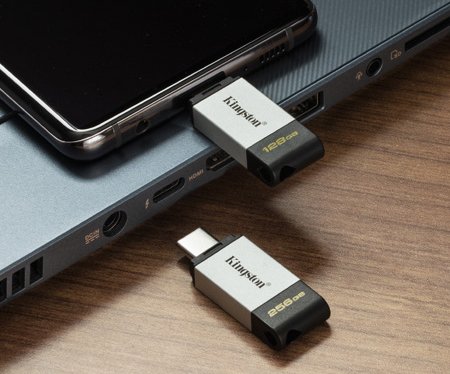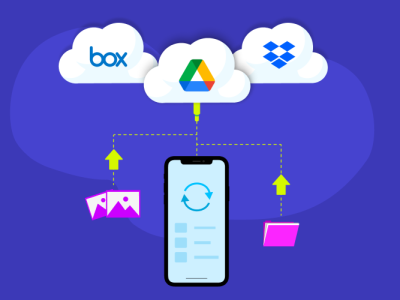In today’s digital age, we rely heavily on portable storage devices to store and transfer our important data. Two of the most popular options are flash drives vs thumb drives. While these terms are often used interchangeably, they are not necessarily the same thing.
What is a Flash Drive?
A flash drive is a type of storage device that uses flash memory to store and transfer data. It is a small, portable device that can plug into a USB port on a computer or other device. Flash drives typically have a USB connector on one end and a protective cap or cover on the other.
Flash drives are available in a range of storage capacities, typically ranging from 2GB to 256GB or more. They can be used to store a wide variety of data, including documents, photos, music, videos, and more. Flash drives are also widely used for transferring data between computers, as they are portable and easy to use.
What is a Thumb Drive?
A thumb drive is another type of portable storage device that is often confused with a flash drive. However, the two terms are not necessarily interchangeable.
A thumb drive is typically a smaller version of a flash drive, designed to be even more portable and compact. It is often shaped like a small keychain or fob, and may have a retractable USB connector or no cap at all.
Like flash drives, thumb drives use flash memory to store and transfer data. They are available in a range of storage capacities, typically ranging from 1GB to 64GB or more. While thumb drives are not as widely used as flash drives, they are still popular for their compact size and ease of use.
Understanding the Differences
While flash drives vs thumb drives may seem similar at first glance, there are several key differences between the two. Here are some of the most important factors to consider when choosing between a flash drive and a thumb drive:
Size and Portability
One of the biggest differences between flash drives and thumb drives is their size and portability. Flash drives are typically slightly larger than thumb drives, with a USB connector on one end and a protective cap or cover on the other. They are still quite small and portable, but may not be as easy to carry on a keychain or in a pocket.
Thumb drives, on the other hand, are designed to be even more compact and portable. They are often shaped like a small keychain or fob, and may have a retractable USB connector or no cap at all. This makes them easy to carry around wherever you go, but also means they may have a lower storage capacity than flash drives.
Storage Capacity
Another important factor to consider when choosing between a flash drive and a thumb drive is storage capacity. Flash drives are available in a wider range of storage capacities than thumb drives, with options ranging from 2GB to 256GB or more. This makes them a good choice for storing large amounts of data, such as high-resolution photos or videos.
Thumb drives, on the other hand, typically have a lower storage capacity than flash drives. They are usually available in capacities ranging from 1GB to 64GB, making them better suited for smaller amounts of data. However, for most everyday use cases, a thumb drive’s storage capacity will be sufficient.
Durability and Lifespan
When it comes to durability and lifespan, flash drives vs thumb drives are relatively similar. Both types of devices use flash memory, which is a type of non-volatile memory that retains data even when the device is not powered on. This makes them both reliable and long-lasting, with an average lifespan of around 10 years or more.
Thumb drives, on the other hand, are often designed to be even more durable and rugged than flash drives. They may have a metal or rubber casing that helps protect them from damage, and may be waterproof or shockproof.
This makes them a good choice for people who need a storage device that can withstand extreme conditions, such as hikers or outdoor enthusiasts.
Price
When it comes to price, both flash drives vs thumb drives are relatively affordable. The cost of these devices has decreased significantly over the years, making them accessible to a wide range of users. However, there are some differences in pricing that are worth considering.
Flash drives are typically slightly more expensive than thumb drives, especially for higher-capacity models. This is because flash drives typically have a larger storage capacity than thumb drives, and may also have a more rugged design.
However, for most everyday use cases, the price difference between flash drives vs thumb drives will be relatively small.
Compatibility
Compatibility is another important factor to consider when choosing between a flash drive and a thumb drive. Both types of devices are designed to be compatible with a wide range of computers and devices, including laptops, desktops, and even some smartphones and tablets.
However, it’s worth noting that some older computers may not be compatible with newer flash drives or thumb drives. In some cases, you may need to install a driver or update your computer’s software in order to use your storage device.
It’s always a good idea to check the compatibility of your storage device with your computer or device before making a purchase.
Conclusion
In summary, flash drives and thumb drives are two popular types of portable storage devices that are used to store and transfer data. While the terms are often used interchangeably, there are some important differences between the two that are worth considering.
Flash drives are slightly larger and have a wider range of storage capacities, making them a good choice for storing large amounts of data. They also tend to have a more rugged design, with a protective cap or cover that helps keep the USB connector safe from damage.
Read More: The Positive Impact of Technology on Business and Society













Comments